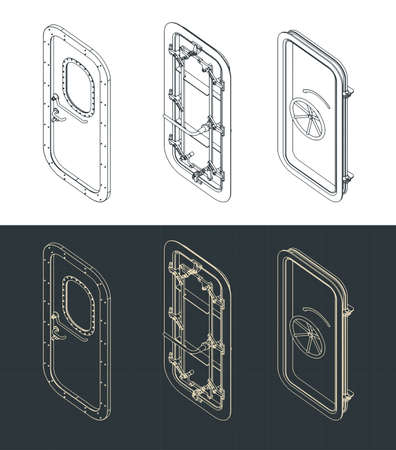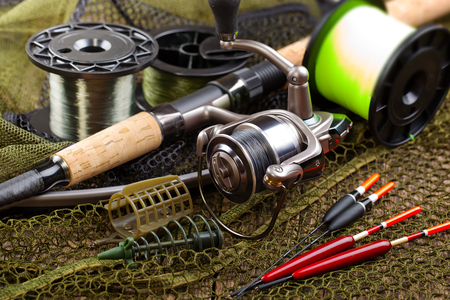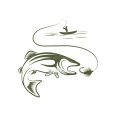Understanding Jig Dynamics in Competitive Bass Fishing
When it comes to tournament-level bass fishing, the smallest details can make the biggest difference. One of the most critical pieces of gear that pro anglers rely on is the jig. But not all jigs are created equal. The design of a jig—including head shape, weight distribution, and skirt material—can dramatically impact its performance in different fishing conditions.
Why Jig Design Matters at the Tournament Level
Tournament anglers often face high-pressure situations where every cast counts. A well-designed jig helps increase hook-up ratios, mimic natural prey more effectively, and perform better in specific environments like heavy cover or deep water. Understanding how each element contributes to performance gives anglers an edge when it matters most.
Key Jig Design Elements
Below is a breakdown of the core components that influence how a jig performs:
| Design Element | Function | Tournament Benefit |
|---|---|---|
| Head Shape | Determines how the jig moves through water and cover | Improves presentation and reduces hang-ups in structure |
| Weight Distribution | Affects fall rate and balance during retrieve | Allows for precise control and reaction strikes from bass |
| Skirt Material | Adds motion and visual appeal to mimic baitfish or craws | Enhances realism for finicky fish under pressure |
| Hook Style & Size | Impacts hook-up ratio and ability to hold big fish | Keeps bass pinned during aggressive fights |
| Weed Guard Design | Protects the hook from snagging while maintaining strike efficiency | Enables fishing heavy cover without compromising hooksets |
Insights from Pro Anglers on Jig Performance
Top-level anglers like Brandon Palaniuk and Greg Hackney emphasize the importance of matching your jig design to both water conditions and bass behavior. For example, football-head jigs excel in rocky bottoms due to their stability, while flipping jigs with an arched head are perfect for punching through thick vegetation. Skirt material also plays a role—silicone skirts offer vibrant color options and consistent flare, whereas hand-tied living rubber skirts provide a subtle, lifelike movement thats ideal in cold water or pressured lakes.
Pro Tip:
“The right jig isn’t just about catching fish—it’s about catching the right fish when it counts.” — Elite Series Pro Angler.
The Science Behind Head Shapes and Weight Balance
The shape of the jig head not only affects how it moves but also determines its compatibility with trailers and its ability to remain upright on the bottom. A round ball head provides versatility across multiple techniques, while a swim jig head features a pointed nose that cuts cleanly through grass. Matching weight to depth is also crucial—a heavier jig falls faster but may spook shallow fish if misused.
Common Head Shapes and Their Applications:
| Head Shape | Best Used In | Main Advantage |
|---|---|---|
| Football Head | Rocky bottoms, ledges, deep structure fishing | Sits upright; reduces roll-over; great feel on bottom contact |
| Arkie/Flipping Head | Docks, brush piles, heavy cover areas | Broad base for skipping; resists tipping over; good for pitching/flipping techniques |
| Swim Jig Head | Grass lines, open water, submerged vegetation | Narrow profile glides smoothly; mimics baitfish motion naturally during retrieve |
| Punching Head (Tungsten) | Matted grass, hyacinths, thick surface vegetation layers | Dense material punches through easily; compact size creates minimal splash entry point |
| Finesse Round Head | Clear water, finesse presentations with light line setups | Naturally subtle action; ideal for spooky or pressured bass |
The Role of Skirt Material in Jig Action and Appeal
The skirt is more than decoration—it brings your jig to life underwater. Silicone skirts are durable and allow for vibrant colors that stay visible even in stained water. On the other hand, living rubber skirts respond subtly to current changes, making them ideal when you need a natural look without too much flash. Many pros prefer hand-tied skirts because they maintain their flare better than banded ones, especially after repeated use.
Tournament-Ready Skirt Customization Tips:
- Add contrast: Use two-tone or multi-color skirts to create visual separation that imitates real forage.
- Tune length: Trim skirt strands slightly shorter to reduce bulk or leave them longer for added profile in muddy water. 2. Designing Custom Molds for Precision and Consistency
- Smooth edges: Avoid sharp angles that might disrupt water flow or catch vegetation.
- Weight distribution: Keep more weight low and forward for better tracking and casting accuracy.
- Add eye sockets: Even if optional, theyre great for giving your jigs that extra touch of realism.
- Use mold inserts: To shape fine details like gill plates or fin lines without compromising structure strength.
- Test in a tank: Before mass production, test prototypes in clear water to observe how they move and settle.
- Fall rate
- Skirt flare and movement
- Hook-up ratio
- Snag resistance
- Bait holding ability
- Verify weight consistency with a digital scale
- Inspect paint finish for chips or imperfections that could spook fish
- Check hook sharpness and alignment under load
When it comes to tournament-level bass fishing, having a jig that performs the same way every single time can be a game-changer. Custom jig mold design is all about getting the bait presentation just right, boosting your hook-up ratios, and making sure your jig stays in contact with the bottom — where the big ones usually hang out. Lets break down how advanced anglers are taking control of their performance by designing their own molds.
Understanding the Importance of Precision
Precision in mold design means your jigs will have consistent weight distribution, skirt flare, and hook alignment. These small details directly affect how your jig moves in the water and how fish respond to it. Whether youre flipping heavy cover or dragging along rocky bottoms, a well-designed mold ensures your bait does exactly what you want it to do — every cast, every time.
Advanced Techniques in Mold Design
Custom jig molds start with a solid concept. Tournament anglers often sketch out or digitally model their jig head shapes based on specific fishing conditions. Here are some advanced techniques they use:
CAD Modeling
Many pros use CAD (Computer-Aided Design) software to fine-tune jig head geometry. This lets them test different shapes virtually before committing to a physical mold.
3D Printing Prototypes
After modeling, 3D printing allows quick prototyping of designs. This helps anglers test balance and action before investing in aluminum molds.
Mold Material Selection
The most common material for production molds is aluminum due to its durability and heat resistance. However, silicone molds are sometimes used for testing or short runs because they’re quicker and cheaper to make.
Key Elements for Consistent Jigs
| Design Element | Impact on Jig Performance |
|---|---|
| Hook Placement | Affects hook-up ratio and strength during the fight. |
| Head Shape | Influences bottom contact and snag resistance. |
| Skirt Collar Design | Controls skirt flare and movement in water. |
| Weight Distribution | Impacts fall rate and swimming action. |
Tuning for Specific Conditions
Tournament anglers don’t just make one mold — they create several variations optimized for different scenarios. For example, a football head works great on rocky structure, while an arkie-style head excels in heavy vegetation. By designing custom molds for each situation, anglers can present their bait perfectly no matter what kind of water theyre fishing.
Pro Tip:
If youre new to custom mold design, start with modifying existing designs instead of building from scratch. Small tweaks like adjusting the hook angle or changing the skirt collar can lead to big improvements on the water.
The more you dial in your jigs behavior through smart mold design, the more consistent your results will be when it counts — on tournament day.

3. Material Selection and Mold Fabrication Techniques
When it comes to designing jig molds for high-level tournament fishing, the materials you choose and the way you fabricate your molds can make a huge difference in performance, durability, and consistency. Let’s break down how to pick the right materials and understand the pros and cons of different fabrication methods.
Choosing the Right Mold Materials
Jig molds need to withstand high temperatures, especially when pouring molten lead or other metals. They also need to hold tight tolerances to create consistent jigs every time. Here are some common materials used for jig mold construction:
| Material | Heat Resistance | Durability | Cost | Best For |
|---|---|---|---|---|
| Aluminum | High | Excellent | Moderate | CNC machining, tournament-grade molds |
| Steel (Tool Steel) | Very High | Superior | High | High-volume production, long-term use |
| Silicone (High-temp) | Medium | Low to Medium | Low | Prototype testing, soft plastic baits |
If youre building molds for lead jigs that will be used in competitive settings, aluminum is often the go-to because it balances heat resistance with precision and ease of machining.
CNC Machining vs Traditional Mold-Making Methods
The next big decision in mold making is choosing between CNC machining and traditional methods like manual milling or hand carving. Here’s a quick comparison:
| Mold-Making Method | Description | Main Benefits | Main Drawbacks |
|---|---|---|---|
| CNC Machining | A computer-controlled process that carves out your mold design from metal blocks with extreme precision. | – High accuracy – Repeatable results – Fast once programmed – Ideal for tournament-grade designs |
– Expensive setup – Requires CAD design skills – Needs access to CNC equipment |
| Traditional Methods | Molds are made by hand using files, drills, or manual mills based on templates or sketches. | – Lower cost entry point – More DIY-friendly – Great for small batches or prototypes |
– Less precise – Time-consuming – Harder to replicate exact copies |
If youre aiming for tournament-level performance where consistency is key, CNC machining is worth the investment. For hobbyists or early prototyping, traditional methods still have their place—especially if youre just getting started.
Tournament Tip:
If you’re working with a machine shop or outsourcing your mold work, make sure they understand the specific needs of jig fishing—like hook alignment, skirt collar placement, and weed guard slots. These small details can make a big impact on your bait’s action in the water.
4. Balancing Hydrodynamics and Realism in Jig Profiles
When designing jig molds for tournament-level bass fishing, achieving the perfect balance between hydrodynamic performance and realistic appearance is a game-changer. In high-pressure tournament waters, where fish have seen it all, your jig needs to move naturally and look alive to get more strikes.
Why Hydrodynamics Matter
Hydrodynamics refers to how your jig moves through the water. A well-designed jig head should cut through water efficiently, sink at the right speed, and maintain a stable posture during retrieve or drop. This helps mimic the behavior of prey like crawfish or baitfish that bass are naturally drawn to.
The Role of Realism
On the other hand, realism plays a psychological role. In clear water or heavily pressured lakes, bass can be picky. Jigs with lifelike profiles, detailed eyes, scale textures, and natural colors increase your chances of getting bit. The goal is to create a lure that not only moves like real prey but also looks convincing up close.
Blending Form and Function
To build an effective tournament jig, you need both hydrodynamic flow and visual accuracy. Heres a comparison of key features that help strike this balance:
| Feature | Hydrodynamic Benefit | Realism Benefit |
|---|---|---|
| Streamlined Head Shape | Cuts through water smoothly; reduces drag | Mimics natural profile of baitfish or craws |
| Flat Bottom Design | Keeps jig upright on bottom; enhances stability | Presents more natural feeding posture |
| Molded 3D Eyes | Minimal impact on flow resistance | Adds visual realism; triggers reaction strikes |
| Fine Skirt Channels | Ensures even skirt movement in current | Makes skirt flare naturally like fins or legs |
| Textured Surface (Scales/Gills) | No major effect on flow unless overly rough | Adds subtle realism in clear water conditions |
Tweaking Your Mold Design for Performance & Appeal
In mold fabrication, its important to test different shapes and weights to see how they perform in real-life scenarios. For instance, a football head jig may perform better dragging along rocky bottoms while maintaining an upright profile—great for mimicking crawfish. On the flip side, a swim jig with a bullet-shaped head offers better swimming action through grass lines.
Tips for Optimizing Your Jig Mold:
The Takeaway:
A successful jig mold design isn’t just about looking good or cutting through water—it’s about doing both flawlessly. When you create jigs that glide naturally while looking exactly like what bass are hunting, you gain an edge over the competition in any tournament setting.
5. Testing, Tuning, and Iteration for Tournament Readiness
Designing and fabricating a high-performance jig mold is only part of the journey—making sure that jig performs flawlessly on the water is what separates weekend warriors from serious tournament anglers. Field testing, angler feedback, and data-driven tweaks are essential steps in preparing your custom jig for competition-level fishing.
Why On-the-Water Testing Matters
No matter how perfect your mold looks in the shop, real-world conditions can reveal strengths and weaknesses you can’t simulate indoors. From current flow to bottom composition, every lake or river presents unique challenges that can affect how your jig swims, falls, and triggers bites. That’s why its crucial to test prototypes in the same types of environments where you’ll be fishing tournaments.
Setting Up a Feedback Loop
The best anglers rely on more than just their gut—they use structured feedback loops to improve their gear. After field testing your jigs, gather insights from trusted fishing partners or local pros. Focus on key performance indicators such as:
Use this feedback to pinpoint specific design areas that need adjustment—whether its tweaking head shape, adjusting hook angle, or modifying weight distribution.
Data-Driven Revisions
Tournament anglers know that small changes can lead to big payoffs. By tracking test results and making incremental improvements, you can fine-tune your jigs for peak performance. Heres an example of how you might structure your testing log:
| Test # | Date | Water Conditions | Observed Performance | Angler Feedback | Revision Needed? |
|---|---|---|---|---|---|
| 1 | April 10 | Muddy, 58°F | Sinks too fast, poor skirt flare | Felt too heavy for shallow cover | Yes – reduce weight by 1/8 oz |
| 2 | April 15 | Clear, 62°F | Smooth glide, good hook-ups | Loved the action around docks | No – keep this model as-is |
Tuning Tips Before Tournament Day
Once your jig mold has gone through multiple rounds of testing and revision, make sure each final version is dialed in before hitting the water on game day. Here are a few last-minute checks:
Pro Tip:
If youre pouring multiple versions of the same jig for different conditions (e.g., flipping vs. swimming), color-code or label them clearly so you can grab the right one quickly during a high-pressure moment.


